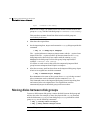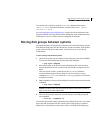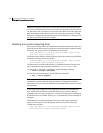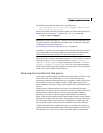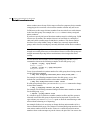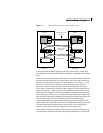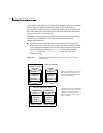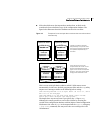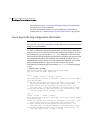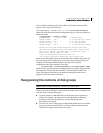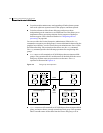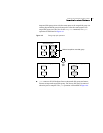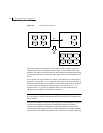
191Creating and administering disk groups
Handling conflicting configuration copies
Figure 4-1 Typical arrangement of a 2-node campus cluster
A serial split brain condition typically arises in a cluster when a private (non-
shared) disk group is imported on Node 0 with Node 1 configured as the failover
node.
If the network connections between the nodes are severed, both nodes think that
the other node has died. (This is the usual cause of the split brain condition in
clusters). If a disk group is spread across both enclosure enc0 and enc1, each
portion loses connectivity to the other portion of the disk group. Node 0
continues to update to the disks in the portion of the disk group that it can
access. Node 1, operating as the failover node, imports the other portion of the
disk group (with the
-f option set), and starts updating the disks that it can see.
When the network links are restored, attempting to reattach the missing disks
to the disk group on Node 0, or to re-import the entire disk group on either node,
fails. This serial split brain condition arises because VxVM increments the serial
ID in the disk media record of each imported disk in all the disk group
configuration databases on those disks, and also in the private region of each
imported disk. The value that is stored in the configuration database represents
the serial ID that the disk group expects a disk to have. The serial ID that is
stored in a disk’s private region is considered to be its actual value.
If some disks went missing from the disk group (due to physical disconnection
or power failure) and those disks were imported by another host, the serial IDs
Node 0
Fibre Channel
switches
Disk enclosures
enc0 enc1
Node 1
Building A Building B
Redundant private
network




